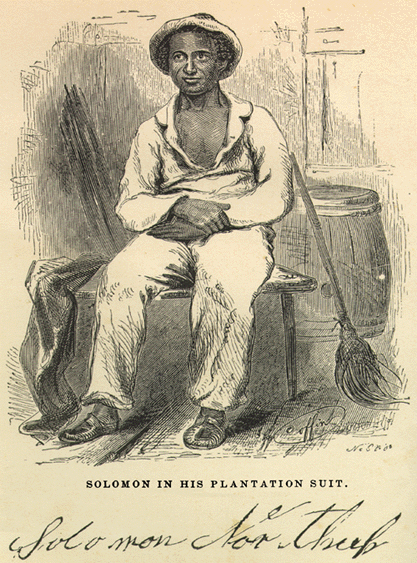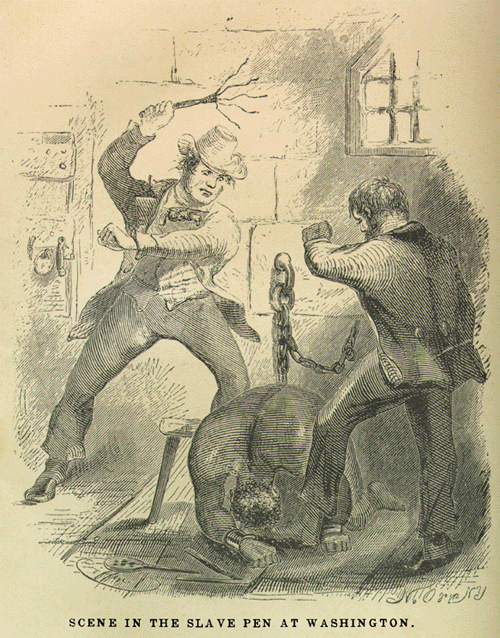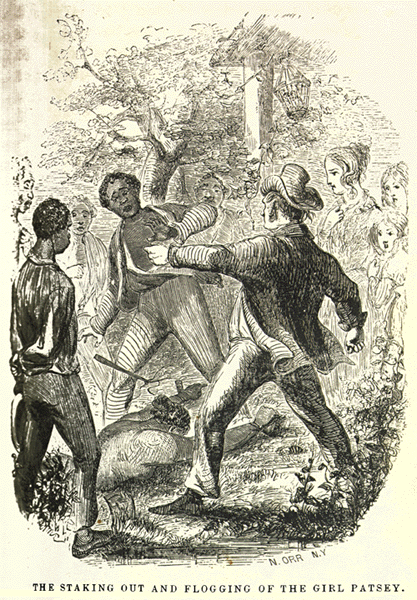How is the narrative constructed, and what is its relationship to history? (DeMallie 1993:524)
Analytical activity by its nature takes us away from the writing of narrative; yet it is fundamental to the writing of history. (Ibid:533)
The 2013 Academy Award winner for Best Picture and the 1853 memoir upon which it is based are excellent demonstrations of the strengths of narrative history. They are both also demonstrations of its limitations.

There can be no mistaking that Northup’s memoir was meant to be what Werner Herzog calls “accountants truth.” It literally puts abolitionist politics front and center—it is dedicated to Harriet Beecher Stowe as “another key to Uncle Tom’s Cabin.”1 The book and the film are both powerfully effective in their indictments of the brutality and hypocrisy of slavery in American society.

The fact that a text is constructed with an explicitly political purpose and/or as an emotional appeal doesn’t necessarily make it a bad source, but that does need to be borne in mind in the evaluation of its reliability. In her October 23, 2013, blog post for The New Yorker, Harvard Law School Professor of Legal History Annette Gordon-Reed notes that the trustworthiness of the information presented in Northup’s memoir is well-supported by “evidence outside of the document, […] created by someone other than [its] writer.”
Historically-oriented anthropologists are often confronted with tasks of source criticism in which corroboration leans upon a solid knowledge and understanding of the ethnographic record. A favorite example of mine is Fred Gleach’s (2003) analysis of John Smith’s narrative of his “rescue” by Pocahontas. Gleach utilizes comparative ethnology to make a strong case that what Smith described was his (unwittingly) role in a set of rituals incorporating the Jamestown colony into the Powhatan social world.
This sort of scholarly work comes up against the analytical/narrative problem. Presentation of his corroboration by way of interpretation costs Gleach the better part of an article. In contrast, any doubt regarding the veracity of the vicious flogging of Patsey portrayed in Northup’s memoir and Steve McQueen’s film can be addressed with a footnote to sources that document the historical reality of flogging.

The narrative form is doubly enticing to the historian, first as source and then as means of scholarly and popular communication. A nice, clean narrative history gets straight to the point and connects with the audience. But what to do when preexisting narratives are at loggerheads with one another? And when there are gaps in evidence? Some degree of one or the other is to be expected in any project of historical reconstruction. What is the proper trade-off between honestly acknowledging their existence and sidetracking the thrust of a narrative?
There is no one best answer to the question of how to tell history. I do believe, though, that the tendency to defend or impugn, rather than qualify, historical narratives is indicative of an over-privileging of documentary sources. Given the problems of informant accuracy inherent in retrospective accounts (Bernard, et al. 1984), efforts to tell stories such as Northup’s are well served by the use of a diversity of sources. I have read more than one professional historian discussing the paucity of slave narratives with the apparent implication that the whole of contemporary knowledge of day to day life under conditions of slavery might be reduced to the documentary record. I have to wonder if those trained and working within history departments are at all aware of the potential of historical archaeology (e.g., Wilkie 2000) and bioarchaeology (e.g., Blakey 2001) for informing these research questions. More’s the pity if they are not.
NOTE
1. The reference is to Stowe’s 1853 book, which is something of an annotated bibliography written in response to those claiming that her famous 1852 work was cut from whole cloth.↩
REFERENCES CITED
Bernard, H. Russell, Peter Killworth, David Kronenfeld, and Lee Sailer. 1984. “The problem of informant accuracy: the validity of retrospective data.” Annual Review of Anthropology 13: 495–517. doi:10.1146/annurev.an.13.100184.002431.
Blakey, Michael L. 2001. “Bioarchaeology of the African diaspora in the Americas: its origins and scope.” Annual Review of Anthropology 30: 387–422. doi:10.1146/annurev.anthro.30.1.387.
DeMallie, Raymond J. 1993. “‘These have no ears’: narrative and the ethnohistorical method.” Ethnohistory 40 (4): [515]–38.
Gleach, Frederic W. 2003.
Northup, Solomon, and David Wilson. 1853. Twelve years a slave. Narrative of Solomon Northup, a citizen of New-York, kidnapped in Washington City in 1841, and rescued in 1853, from a cotton plantation near the Red River, in Louisiana. Auburn: Derby and Miller; Buffalo: Derby, Orton and Mulligan; London: Sampson Low, Son & Company.
Stowe, Harriet Beecher. 1852. Uncle Tom’s cabin; or, Life among the lowly. 2 vols. Boston: John P. Jewett & Co.; Cleveland: Jewett, Proctor & Worthington.
——————————. 1853. A key to Uncle Tom’s cabin; presenting the original facts and documents upon which the story is founded. Together with corroborative statements verifying the truth of the work. Boston: J.P. Jewett & Co.; Cleveland: Jewett, Proctor & Worthington.
Wilkie, Laurie A. 2000. Creating freedom: material culture and African American identity at Oakley Plantation, Louisiana, 1840–1950. Baton Rouge: Louisiana State University Press.
Nice article. Could you say a bit more about the potential of historical and bioarcheology? An example or two would be a big help to the ignorant, myself included.
Why don’t I instead pass along this link to an article* by my old IU classmate Carlina de la Cova as an illustration?: http://onlinelibrary.wiley.com/doi/10.1111/j.1548-1433.2010.01278.x/full
*I believe that Carlina’s paper is more forensic anthropology than either historical archaeology or bioarchaeology. It is still on topic here, though, I think.